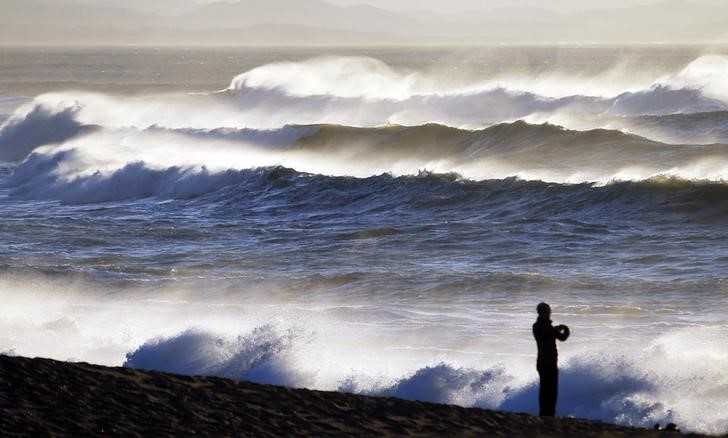GENEVA, Oct 5 (Reuters) - A weak La Nina pattern, possibly affecting weather and rainfall over large parts of the world, may develop and cool the Pacific Ocean in the final quarter of this year, the World Meteorological Organization (WMO) said on Thursday.
La Nina, which can cause floods and droughts, has a 50 to 55 percent probability of emerging in the period, the U.N. agency said in a forecast based on climate models from leading prediction centres worldwide.
"The La Nina event, if it does occur, will likely remain weak," the Geneva-based WMO said in a statement, noting that a La Nina event occurred last year.
La Nina is the opposite phase of El Nino in the interplay between the atmosphere and ocean over the tropical Pacific, collectively known as the El Nino/Southern Oscillation (ENSO).
"Conditions are expected to return to ENSO-neutral in the first quarter of 2018," WMO said.
La Nina is often associated with wet conditions in eastern Australia, Indonesia, the Philippines, Thailand and South Asia, the WMO said.
It usually leads to increased rainfall in northeastern Brazil, Colombia and other northern parts of South America, and drier than normal conditions in Uruguay, parts of Argentina, coastal Ecuador and northwestern Peru.
Heavier rainfall in southern Africa and a shortfall in eastern countries on the continent like Kenya and Somalia are other features.
The U.S. National Weather Service's Climate Prediction Center said in its monthly forecast on Sept. 14 that the likelihood of a La Nina was increasing for the northern hemisphere's fall and winter. ability to predict these events in advance is vitally important to help planning in sensitive sectors like farming, water management, public health, energy and transport and provide early warnings of the associated risks," said WMO Secretary-General Petteri Taalas.
